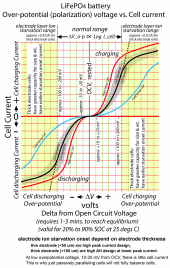I have just ordered 16 280Ah LiFePO4 cells and an EBC-A40L tester (+BMS and other things).
I see that many test all their cells, so they can say "all the cells were in the X to Y Ah range".
Testing all cells will take a lot of time.
What about this:
1 Do the top balancing (not only the EBC-A40L, I will probably help with other power supplies to speed it up at the beginning)
2 Build the battery bank
3 Put the wanted test load (probably not critical) on the whole bank via an inverter or whatever
4 Let the loading continue until you have located the weakest cell (first to reach the knee, 2.9V ?)
5 Disconnect that cell from the bank and test it
6 If it tests to 280Ah or more, why would I waste time to test all the other cells?
I see that many test all their cells, so they can say "all the cells were in the X to Y Ah range".
Testing all cells will take a lot of time.
What about this:
1 Do the top balancing (not only the EBC-A40L, I will probably help with other power supplies to speed it up at the beginning)
2 Build the battery bank
3 Put the wanted test load (probably not critical) on the whole bank via an inverter or whatever
4 Let the loading continue until you have located the weakest cell (first to reach the knee, 2.9V ?)
5 Disconnect that cell from the bank and test it
6 If it tests to 280Ah or more, why would I waste time to test all the other cells?





